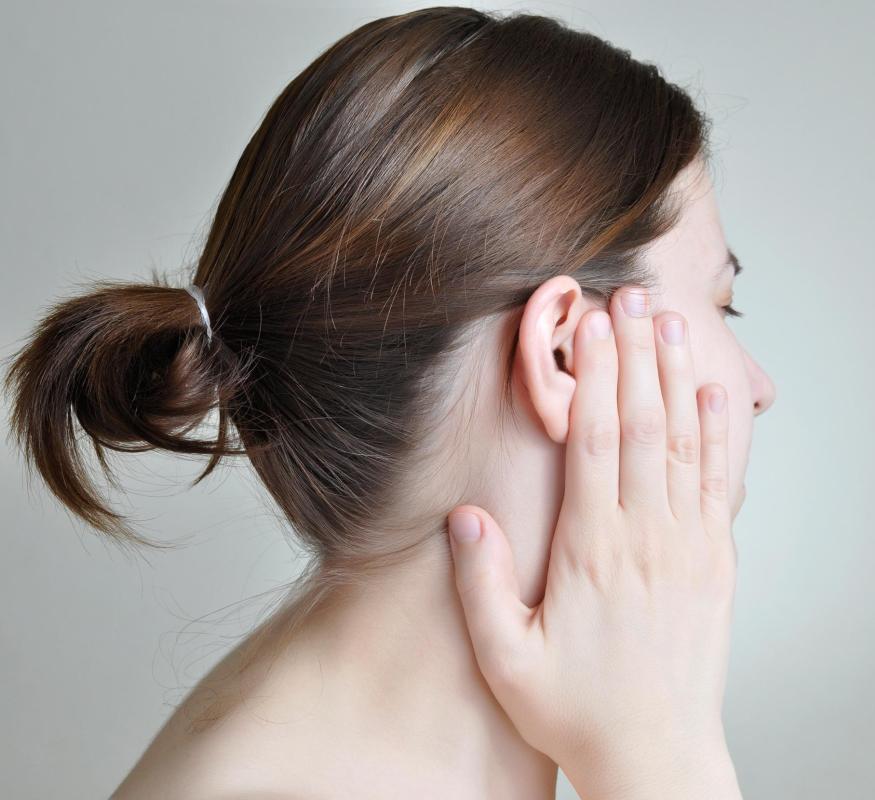At WiseGEEK, we're committed to delivering accurate, trustworthy information. Our expert-authored content is rigorously fact-checked and sourced from credible authorities. Discover how we uphold the highest standards in providing you with reliable knowledge.
What is Audiometry?
Audiometry is conducted to test a person's audible range for tones or speech. A health screening method that is relatively painless, audiometry is often performed when it is suspected that a person may have hearing loss. Typically, a trained technician — known as an audiologist — oversees the subjective testing process by using an electric device called an audiometer.
The testing requires a person to wear headphones while sitting in a soundproof booth. Sitting outside the booth, the audiologist will operate the audiometry equipment and test each ear separately. During a procedure called tone audiometry, a patient will be asked to push a button when he or she hears tones at different frequencies and pitches at different decibel levels.

Another tone audiometry method uses a headband instead of headphones. Placed behind the ears, the headband transmits tone vibrations through bones to the inner ear. The audiologist controls the frequencies and loudness of the tones. A patient is then requested to acknowledge when sounds are heard through the headband. Tone audiometry testing often takes less than 30 minutes.

Speech audiometry examines how well a person perceives the sounds of words. A person sits in a soundproof booth wearing headphones. An audiologist will recite a list of words or phrases at various decibel levels. The technician will then determine speech reception threshold by asking the patient to repeat the words or phrases aloud. The test usually takes 10 minutes to administer.

Results of the hearing test are often documented on a graph known as an audiogram, and are measured in decibels. An audiogram generally records the results separately for both the right and left ear. The chart usually records heard low frequencies on one end and heard high tones at the other end. Also, the diagram maps out the volume of tones heard with the loud tones at the top and softer tones near the bottom of the audiogram.

A person who has normal hearing will usually be able to distinguish and reply to every tone frequency played in both ears during the procedure. Tones are generally audible between zero and 20 decibels Hearing Level (dB HL). A patient who undergoes the hearing test is usually considered to have normal hearing if he or she can distinguish tones in that range.

Speech audiometry results are generally measured as a percentage score. The lowest and highest volumes understood by a patient also are included in the outcome. A person with normal hearing will usually be able to correctly respond or identify to more than 90 percent of the words and phrases and will usually be able to comprehend the average speech, which is spoken between 20 to 50 dB HL.
A patient is generally considered to have an irregular result if there is a serious discrepancy between the results of sound distinguished by the left and right ear. If a person is unable to comprehend a sound of 20 dB HL or higher, he or she is generally regarded as having some hearing loss. Any discrepancy or abnormal result may require additional testing or indicate that a hearing aid or corrective surgery may be needed.
AS FEATURED ON:
AS FEATURED ON:















Discuss this Article
Post your comments